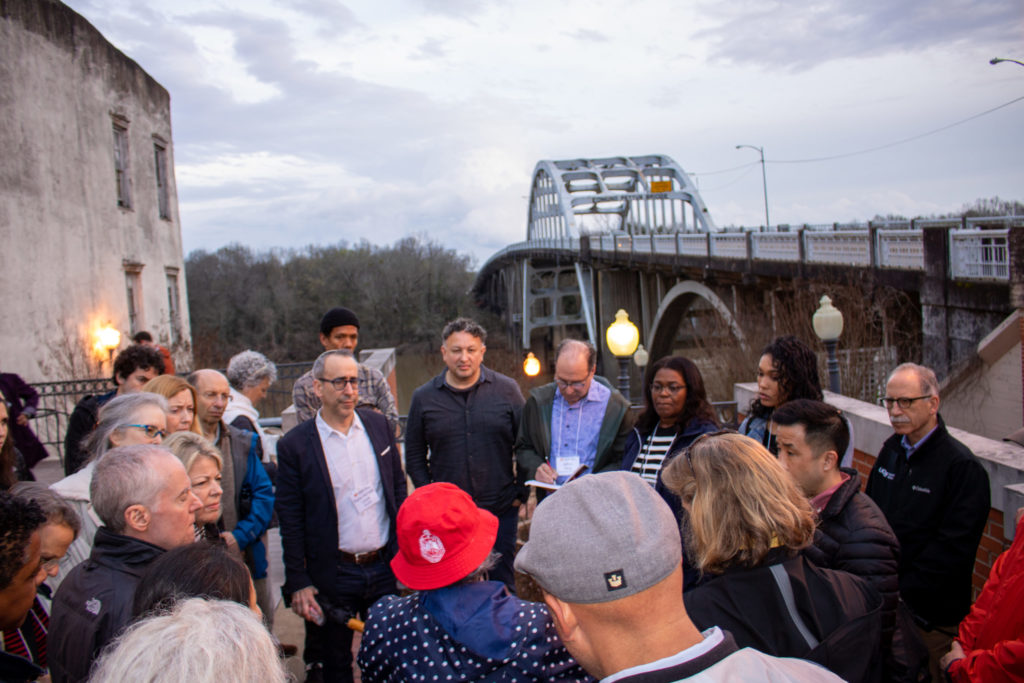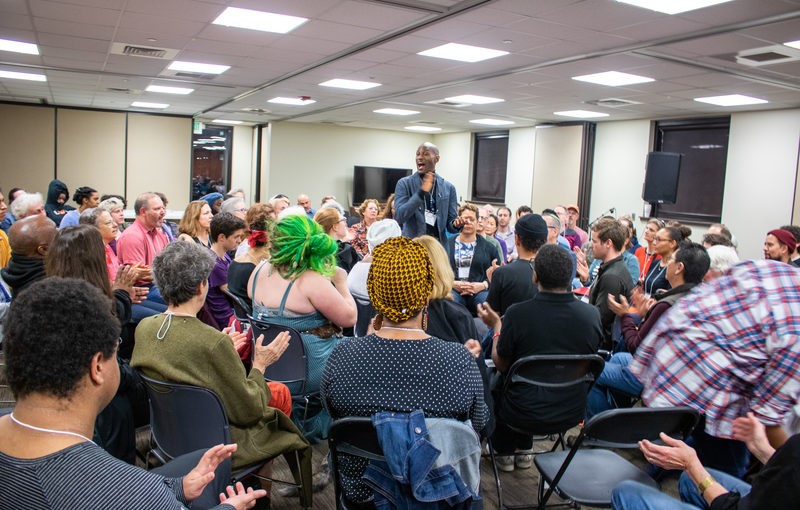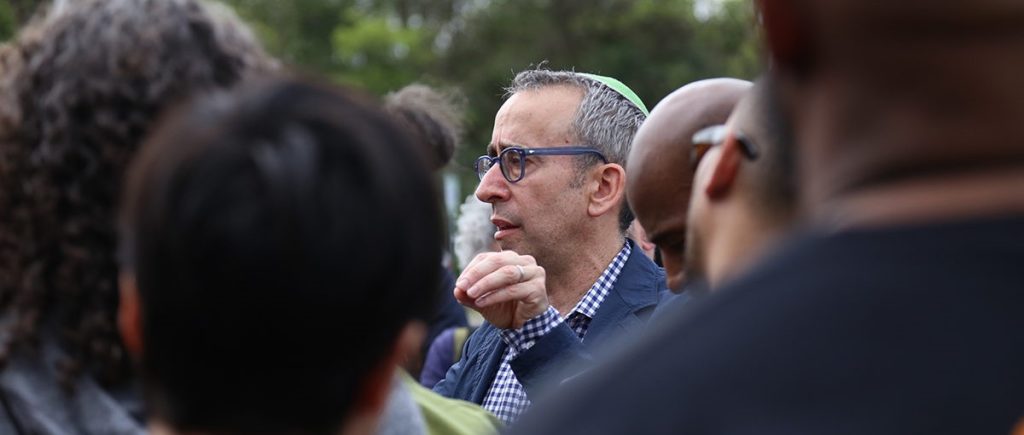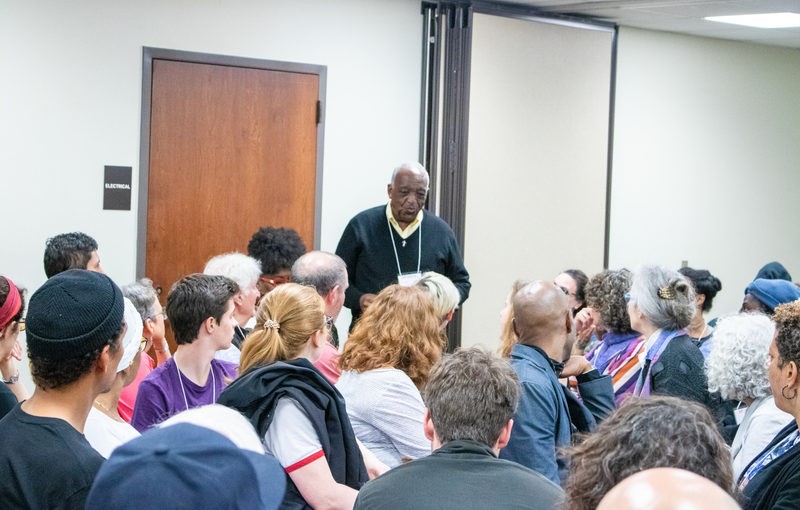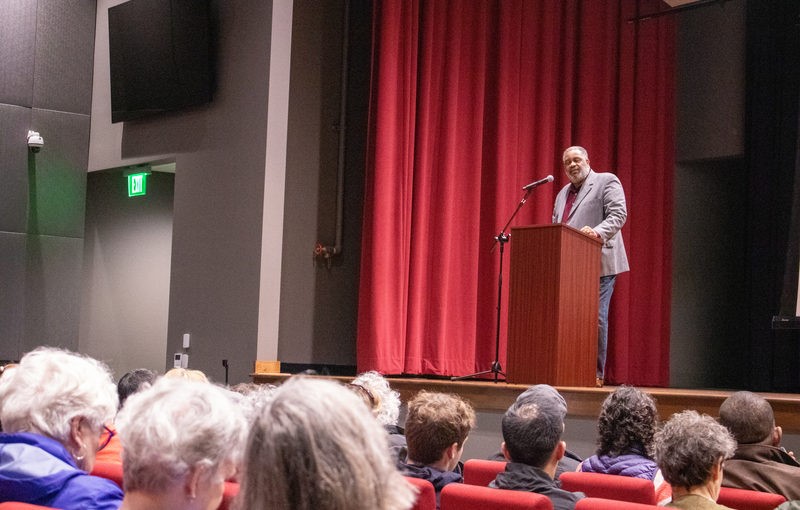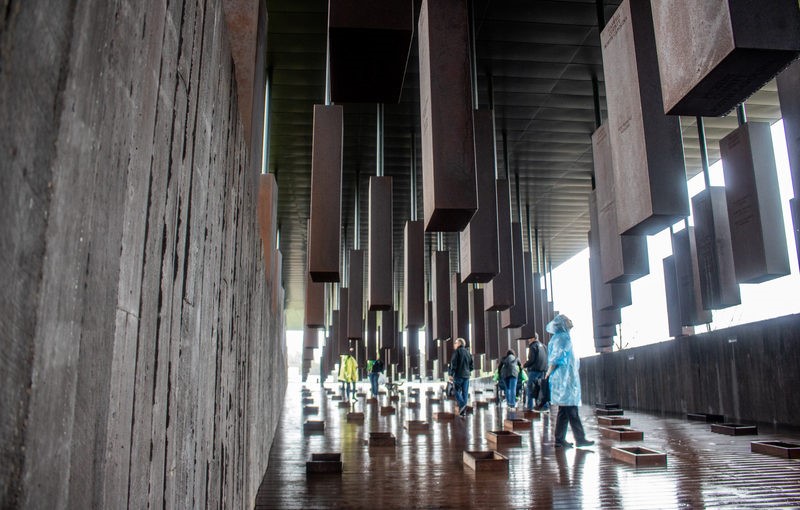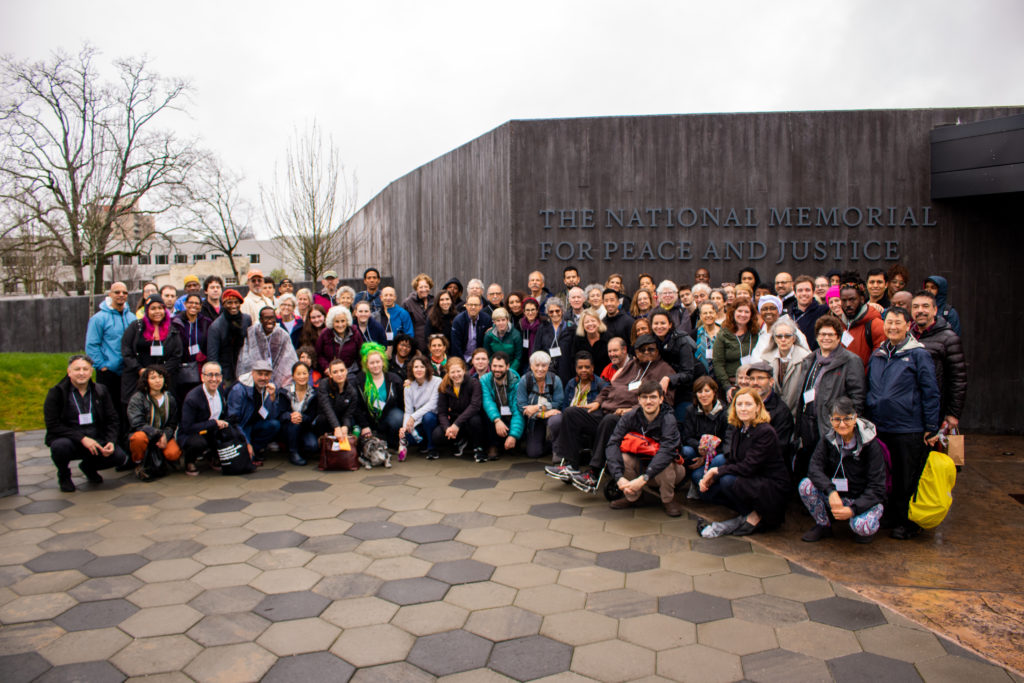A few days later, I was on a Greyhound from Birmingham to Montgomery passing Waffle Houses and billboard psalms. I read through past notes from our gatherings in Freedom Hall, reaching to synthesize and remember what exactly my purpose was, my why, for joining this trip. I scribbled down some scattered thoughts about bearing witness, being an ally, and having a more complete vision of my country’s past, knowing full well that nothing written on that page would equip me for, shield me from, or even enable me to name what I was going to experience in the coming days. I was ashamed at my eagerness to intellectualize and jump ahead to imagine how this experience might “fit” into my life, recognizing, even at the time, the privilege that enables such an instinct. So, I drew myself against the window and tried to just be present, as I would try to do countless times in the coming days.
Just before sundown I stepped off the Greyhound onto Maxwell Boulevard, one of the first streets along the Alabama River. That evening, we gathered in the hotel lobby occupying our in-between time with light banter about the slower pace of life best captured through the 90-second timer at a nearby crosswalk.
That night, we walked to the basement of the Dexter Baptist Church, which would come to be our local Freedom Hall, the place where a young 25-year-old Martin Luther King, Jr. got his start as a minister, and where the organizers of the Montgomery Bus Boycott would hold late night gatherings. Just across the street is the Southern Poverty Law Center, demonstrating the power of proximity, and the rich history of collaboration between judicial activists and spiritual leaders.
Montgomery is the birthplace of modern civil rights activism in America, so casual encounters with residents led to powerful stories and important context. Through a side conversation with a tour guide from a local nonprofit, our group was able to meet the guide’s father, Chap. Chap was born and raised in Alabama in the 1950s, before migrating to New York City as a result of Alabama State University’s segregation policies.
Chap remembers how then-Governor George Wallace stood on the steps of the state university pronouncing his favorite catch phrase, “segregation today, segregation tomorrow, segregation forever.” Around that same time, the murder of the four girls at Birmingham’s 16th Street Baptist Church turned Chap’s frustration into rage, motivating his decision to head north.
History books often describe George Wallace as a young man desperate for power. He began his career as a progressive judge until it proved politically stale, at which point he turned to channeling fear and white supremacy, later becoming a seminal character in our historical through-line from slavery to the modern era. You can imagine the complexity Chap faced when, decades later, George Wallace offered him a job, appointing him to lead ministerial services for inmates on death row. Chap would accept, returning to Alabama to deliver last rites for over two decades.
Now, in his early 80s, Chap addressed our group, in the basement of Dexter Baptist Church, with a simple message: It is more difficult to forgive than it is to hate. I could not begin to imagine what it takes for a man like Chap, who has seen true evil, to arrive at that lesson. The next day would continue to expose more challenging truths.

